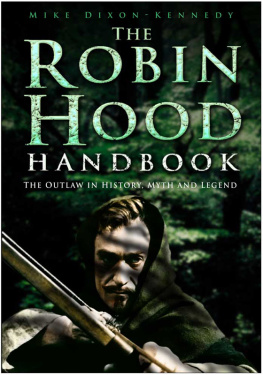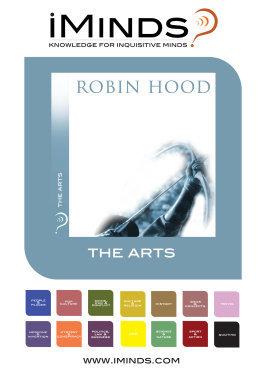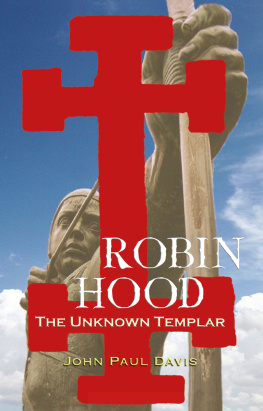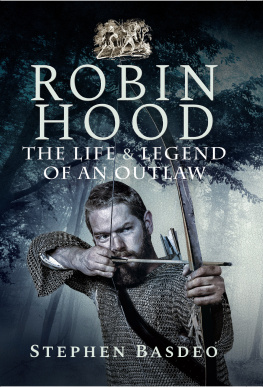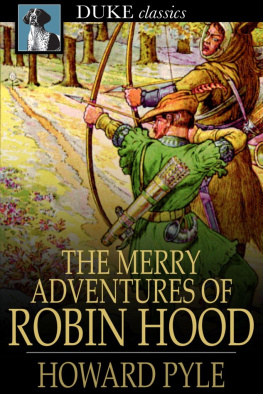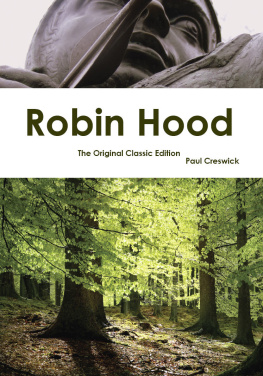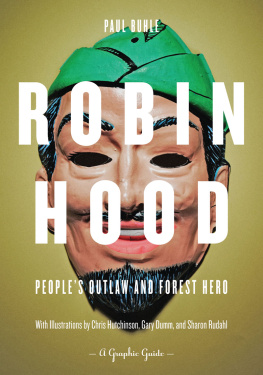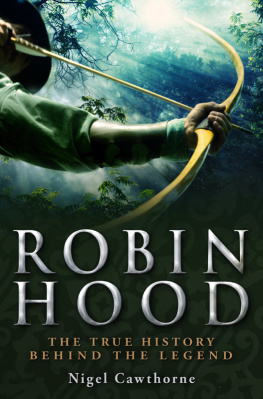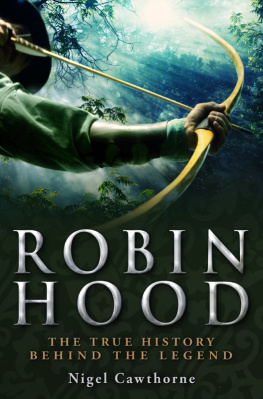THE
R OBIN
H OOD
HANDBOOK
THE
R OBIN
H OOD
HANDBOOK
THE OUTLAW IN HISTORY, MYTH AND LEGEND
M IKE D IXON -K ENNEDY

First published in the United Kingdom in 2006 by
Sutton Publishing Limited
The History Press
The Mill, Brimscombe Port
Stroud, Gloucestershire, GL5 2QG
www.thehistorypress.co.uk
This ebook edition first published in 2013
All rights reserved
Mike Dixon-Kennedy, 2006, 2013
The right of Mike Dixon-Kennedy to be identified as the Author of this work has been asserted in accordance with the Copyrights, Designs and Patents Act 1988.
This ebook is copyright material and must not be copied, reproduced, transferred, distributed, leased, licensed or publicly performed or used in any way except as specifically permitted in writing by the publishers, as allowed under the terms and conditions under which it was purchased or as strictly permitted by applicable copyright law. Any unauthorised distribution or use of this text may be a direct infringement of the authors and publishers rights, and those responsible may be liable in law accordingly.
EPUB ISBN 978 0 7524 9560 6
Original typesetting by The History Press
For all my friends
who have supported and encouraged me
C ONTENTS
P REFACE
I suppose, like a great many other people of my age group, my first introduction to the legends of Robin Hood was Richard Greene swinging through the greenwood in the 1960s television series Robin Hood . Later my interest in this very British hero was rekindled through another television series, Robin of Sherwood , which not only re-awakened my fascination but also induced me to do my own research into the subject. This book is a result of that somewhat lengthy research, though it must be said that Robin Hood has not been my only avenue of research over the ensuing years.
Unlike many other writers and researchers on the subject I have not simply tried to determine the historicity of Robin Hood. That is not to say that I do not firmly believe that Robin Hood was a real man who has a definite place in our history rather than solely in our folklore, but it is rather an affirmation of my belief that to discover the historicity of a legendary character will ultimately destroy the magic and mystique of that character. Like King Arthur, whom I also firmly believe once walked on British soil, Robin Hood is essentially a legendary figure, and it is thus the legends of the character that I have concentrated on, before examining the history behind those legends.
My research has investigated the period during which the legends are believed to have first developed, but that historical background simply illustrates the necessity for the character rather than his actual life and times, and indeed whether or not he really lived at all. Robin Hood is an essential part of our heritage, and yet very little is ever written about the legends themselves. Hundreds of thousands of words have been written about the character in an attempt to discover the truth behind the legends, but all appear to bypass the legends themselves and concentrate on the daunting task of uncovering the history of the character and just why the legends developed, each resulting book turning out to be little more than the authors own personal conclusions. Rather than drawing my own immediate conclusions, of which I have many, I have simply retold the legends in chronological order, and will leave the majority of the conclusion-drawing, at this stage, to you, the reader.
This book is written in four main parts, each of which, I hope, can be enjoyed in its own right. Part One retells the legends of Robin Hood and his band of outlaws, the Merry Men, though whether or not they actually had much to be merry about is doubtful. Here you will not find the popular conception of the outlaw and his men swinging through the trees to right wrong (a mode of transport that there is no evidence Robin Hood or his men ever made use of), but rather an accurate retelling of the legends as they first appeared. Part Two is a concise A to Z of all the major players and places mentioned within the legends. It is here that you will find the historical influence on the legends, as well as gaining easier access to the relevant parts of the legends, in an easy-to-use ready-reference work in a form that has never before been presented.
Part Three concerns itself with a select number of the core source texts that any student of Robin Hood should study in order to glean a better understanding not only of the character, but also of the means by which the legends were propagated and advanced. Finally, the conclusions I have personally drawn have been included as Part Four and I sincerely hope this part will give you much food for thought. It should be noted that this final section simply relates my own personal conclusions and feelings on the subject, and is by no means a definitive statement of fact. Readers can make up their own minds.
I trust I have chosen the best format for the presentation of this book, as it offers easy access to the legends, characters and places that many know in essence, but few know in detail. I also hope that by writing this book I will help to stimulate interest in a very important part of our heritage, a heritage that is all too often overlooked despite its great relevance to modern society. If I have indeed succeeded in this last aim then I shall be only too pleased to hear from readers, especially from those with any comments or suggestions to pass on. Letters should be addressed to the publishers, who will ensure that they reach me.
Mike Dixon-Kennedy
Lincolnshire, 2006
A CKNOWLEDGEMENTS
As with the writing of any book there are a number of people I have to thank. First and foremost are the countless librarians, whose names I have never known, who have sought out and obtained unusual and rare volumes for me to study, along with unpublished manuscripts and documents, and who have thus increased my knowledge of the subject. To all of them, and to all others who have selflessly given their time and expertise to me without thought of reward, I say a great big thank you. Several other people more than deserve a mention, for without them this book would not exist. They are Christopher Feeney of Sutton Publishing for getting this volume accepted for publication, Sarah Cook for her excellent copy-editing, and Alison Miles for pulling the whole process together smoothly and relatively painlessly. Finally I have to thank my long-suffering son Christopher for enduring endless periods when my door has been firmly closed to him as I worked on the manuscript.
P ART O NE
T HE L EGENDS OF R OBIN H OOD AND HIS M ERRY M EN
T he legends of Robin Hood and his Merry Men, as presented here, are drawn from six major sources, as well as from a plethora of other literature, both ancient and modern. The six main sources are A Gest of Robyn Hode , Robin Hood and Guy of Gisborne , Robin Hood and the Curtal Friar , Robin and the Monk , Robin Hood and the Potter and The Death of Robin Hood . Though all of these works were written well after the traditional period ascribed to the hero of the tales, they contain the best-known elements of the legend. By taking the main themes that run through these works, and adding to them certain historical or legendary detail from other sources, the narrative that follows is, perhaps, the most complete version of the legendary life of Robin Hood.
The narrative is split into eleven sections, each covering a main area of the life and legends of Robin Hood, arranged in chronological order covering a time period that runs from the last years of the reign of King Henry II (say from c. 1185), through the reigns of Kings Richard I and John, and ends during the reign of King Henry III sometime after 1235. Popular legend makes the date of Robins death 1247, which is not inconceivable. These are, of course, the traditional periods ascribed to Robin Hood, though some sources place different events in widely differing time periods. By arranging the material in chronological order and basing the text that follows on numerous sources, the confusion has been largely removed, and the legends run from the time when a young Robin Hood, aged around 25, was forced to become an outlaw, to his death, again as an outlaw, some fifty to sixty or more years later, aged about 85.
Next page
